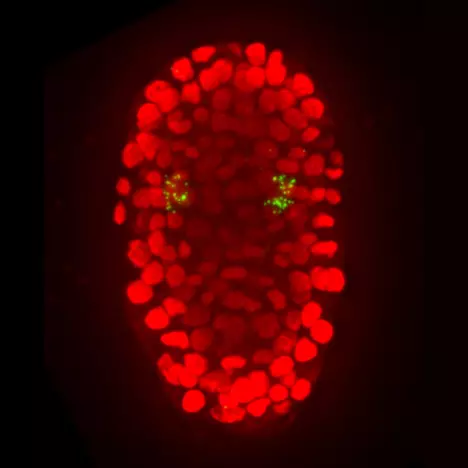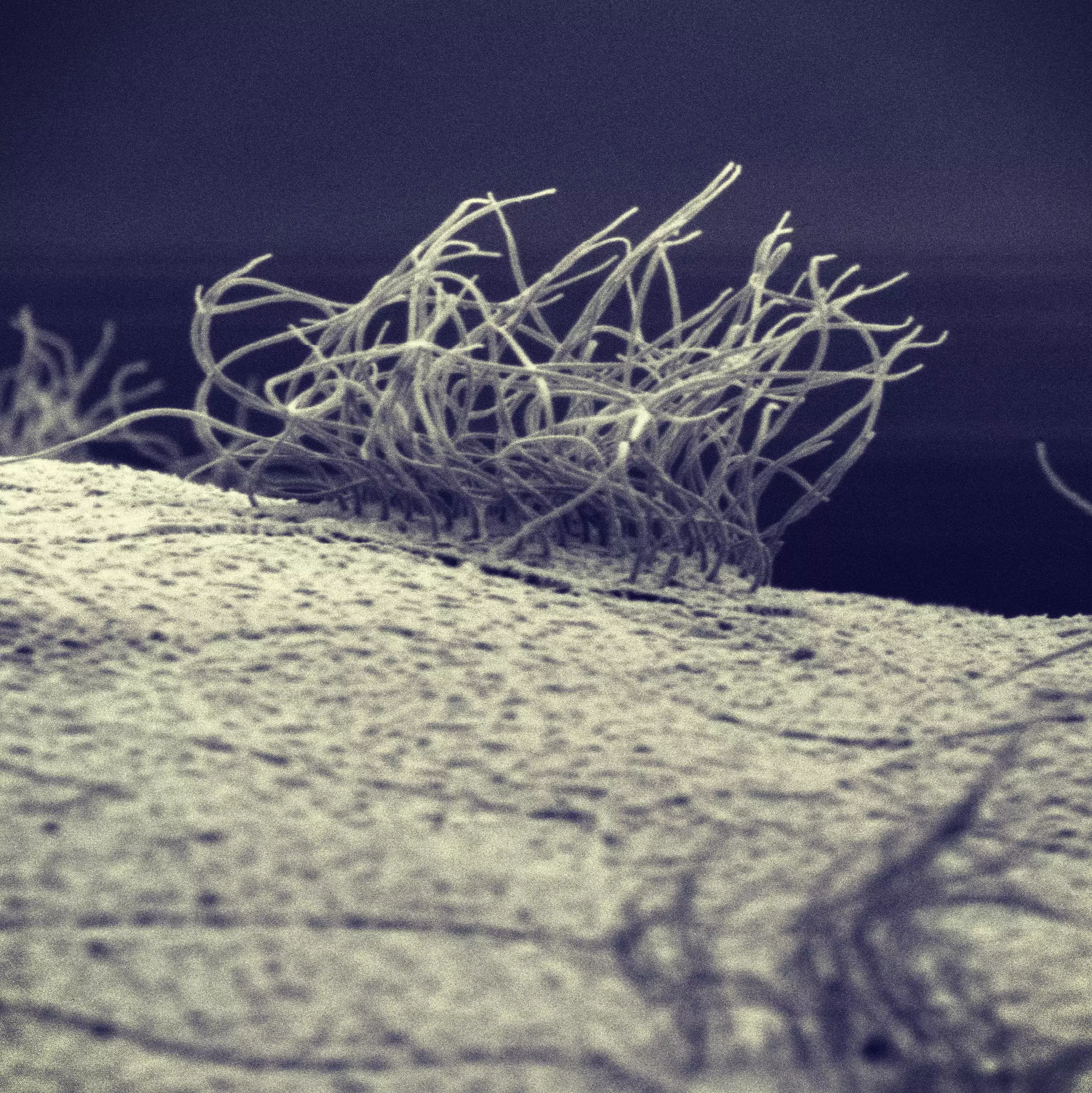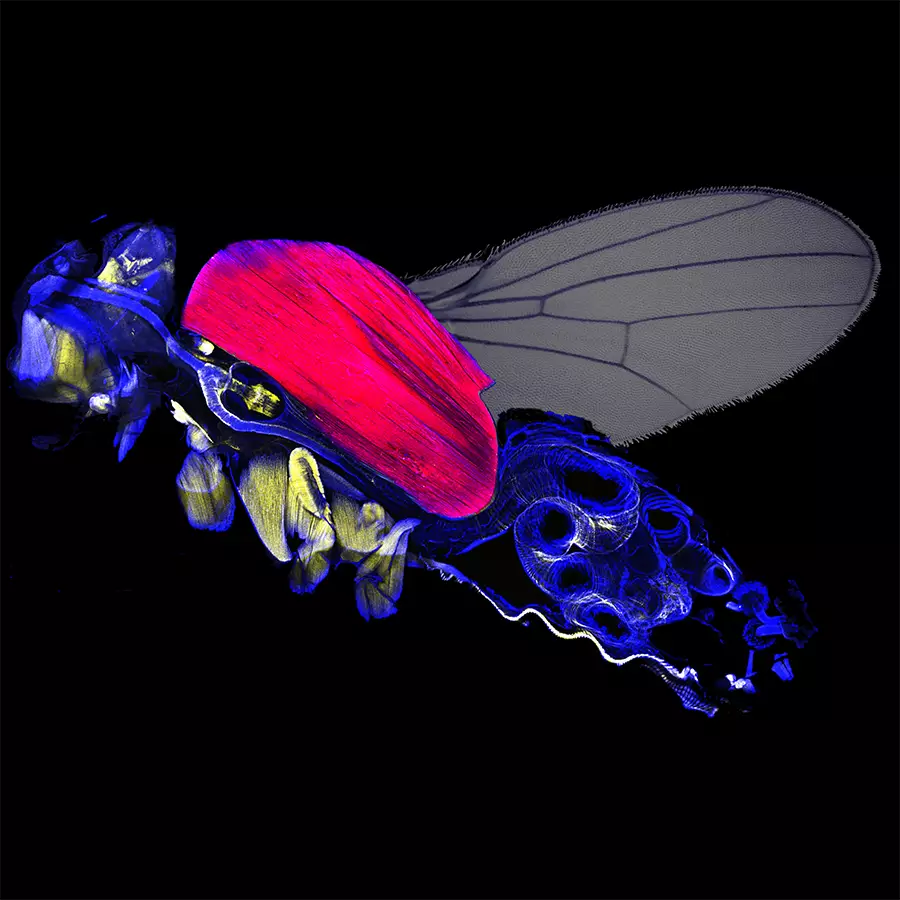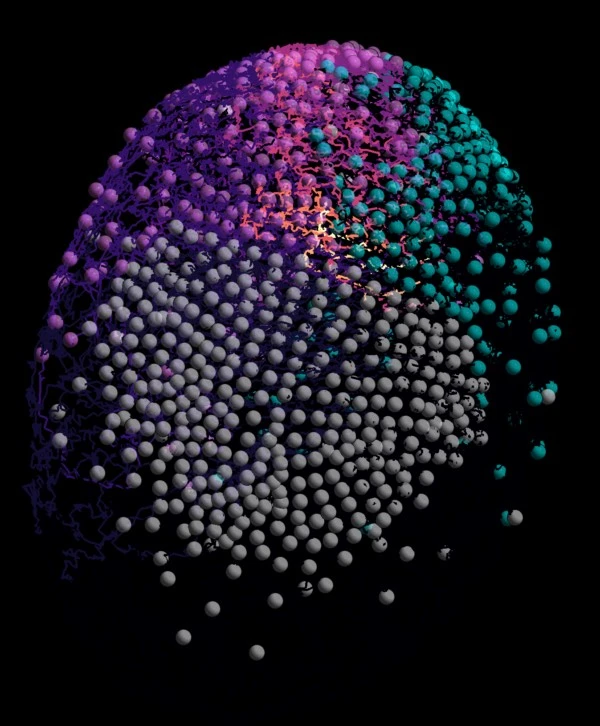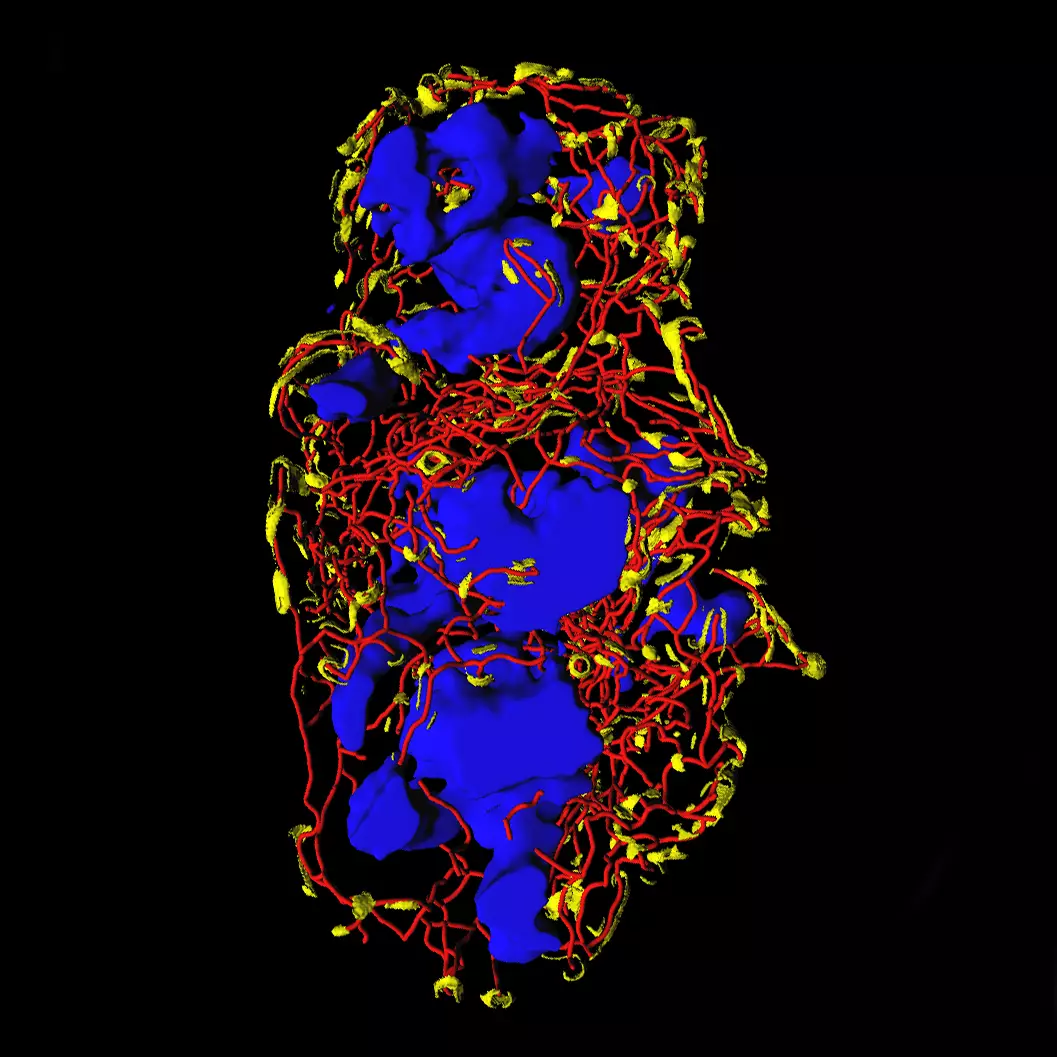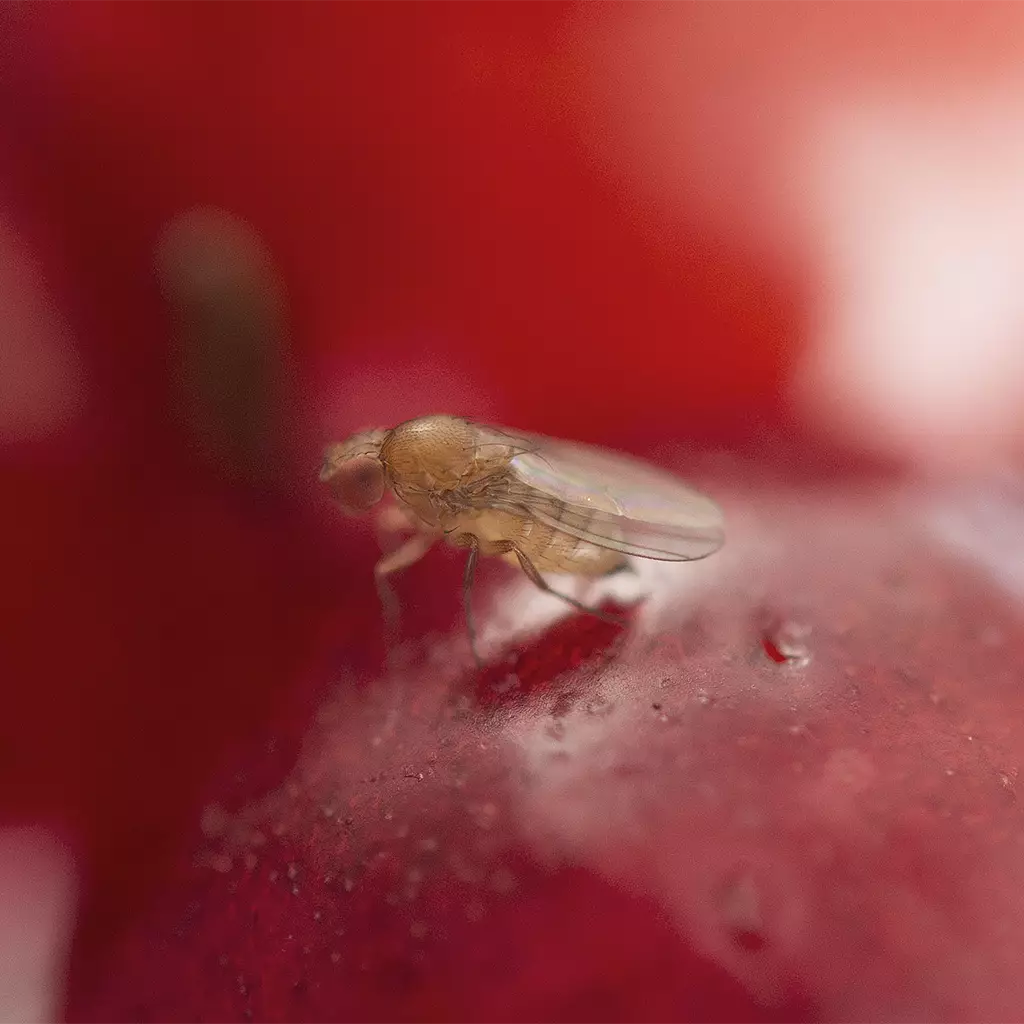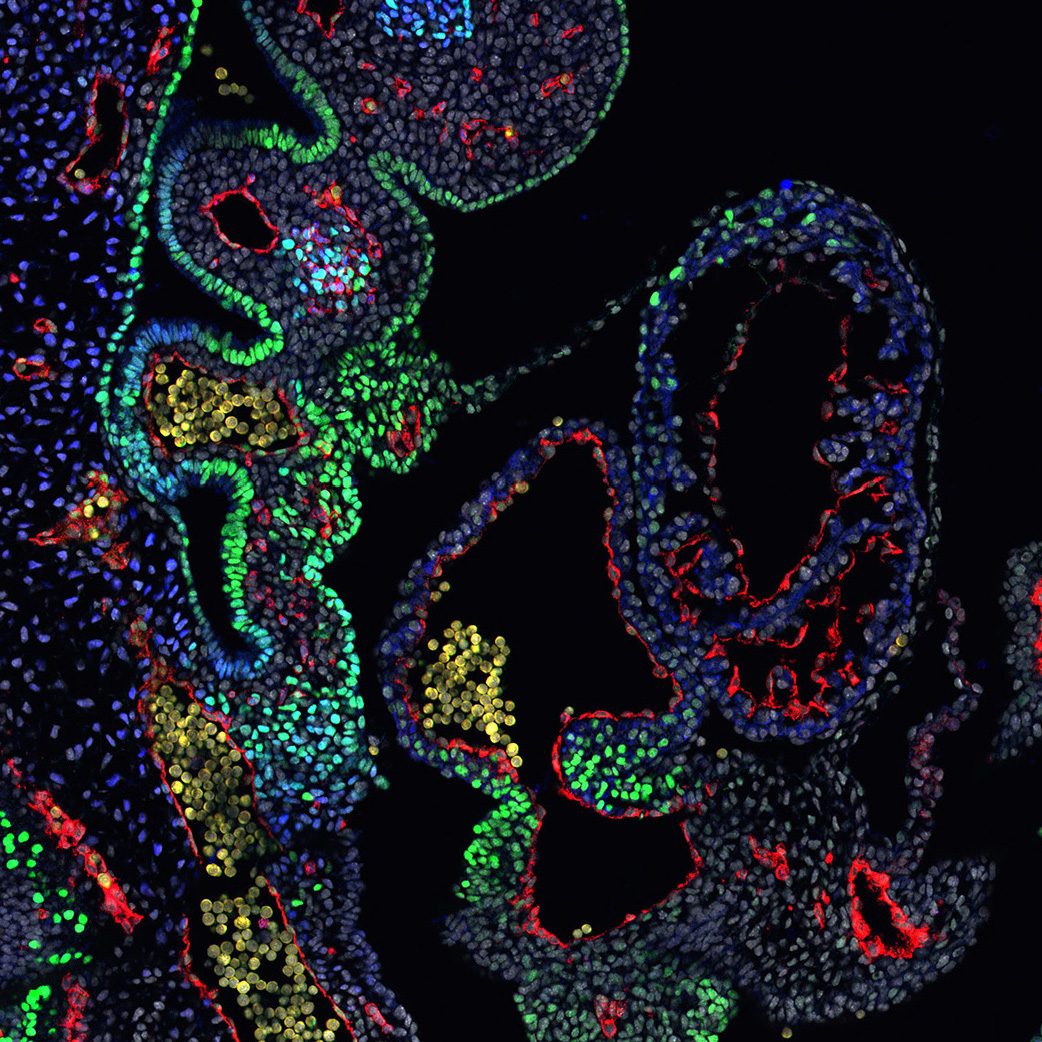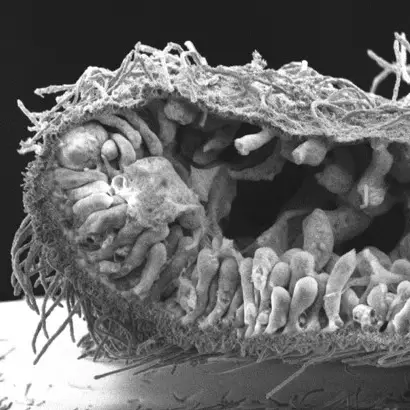Living origami:
How do organ forms and functions emerge and evolve?
Tissues and organs are not just a random assembly of specialised cells. Their particular functions, whether they be epithelia separating the inside from the outside, muscles moving an appendage or circulating the blood, or the brain controlling movements and behaviors, are the result of a highly specific organization of different cell types. At the IBDM we want to understand how cells assemble and work together to form organs that can perform physiological functions that would not be possible for individual cells. We explore the underlying principles that guide the reproducible organization of tissues and organs from one generation to the next. We study how many and which cells contribute to the making of the brain or the heart. We study how the geometry of cells and tissues and the mechanical forces they produce and receive progressively sculpt the shapes of organs. We also look into the genetic mechanisms that allow cells to cooperate, and how the evolution of these mechanisms contributes to the diversity of the animal world.
